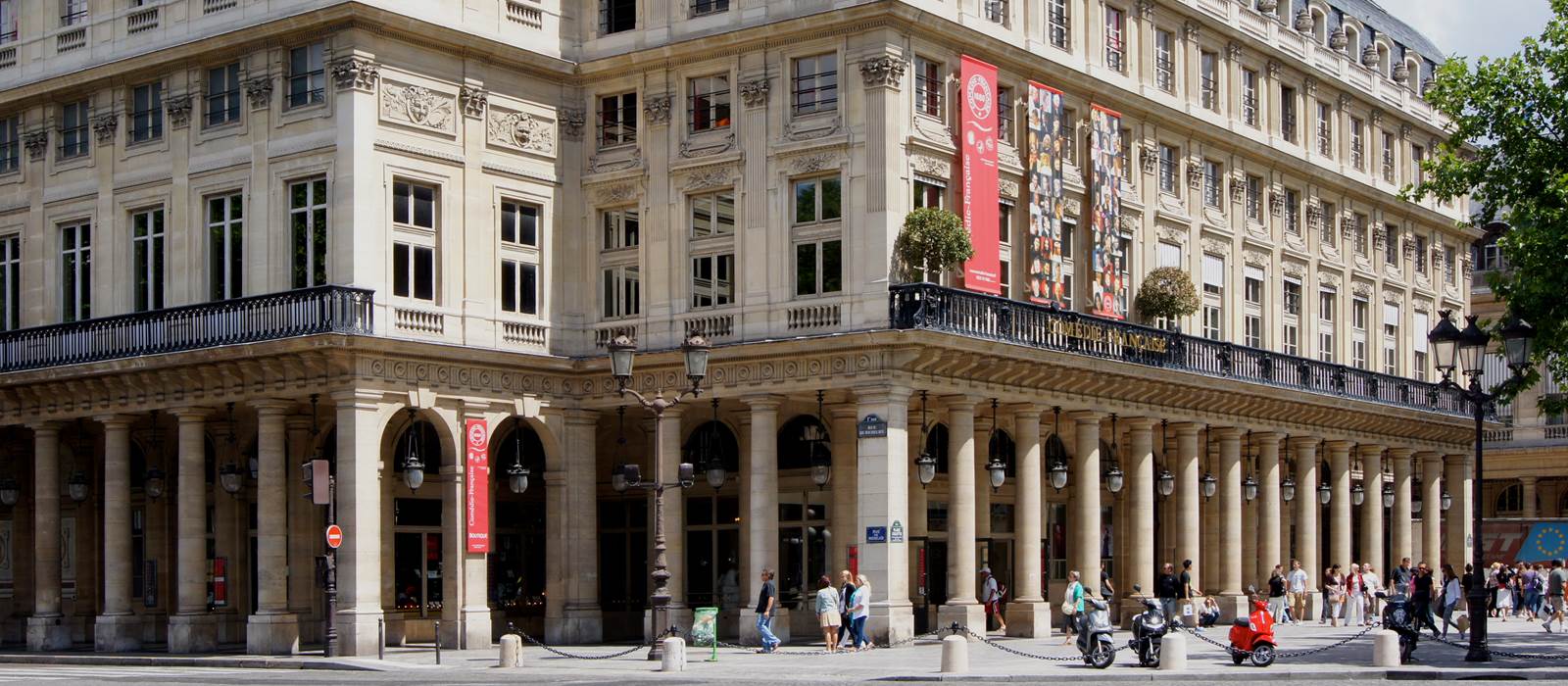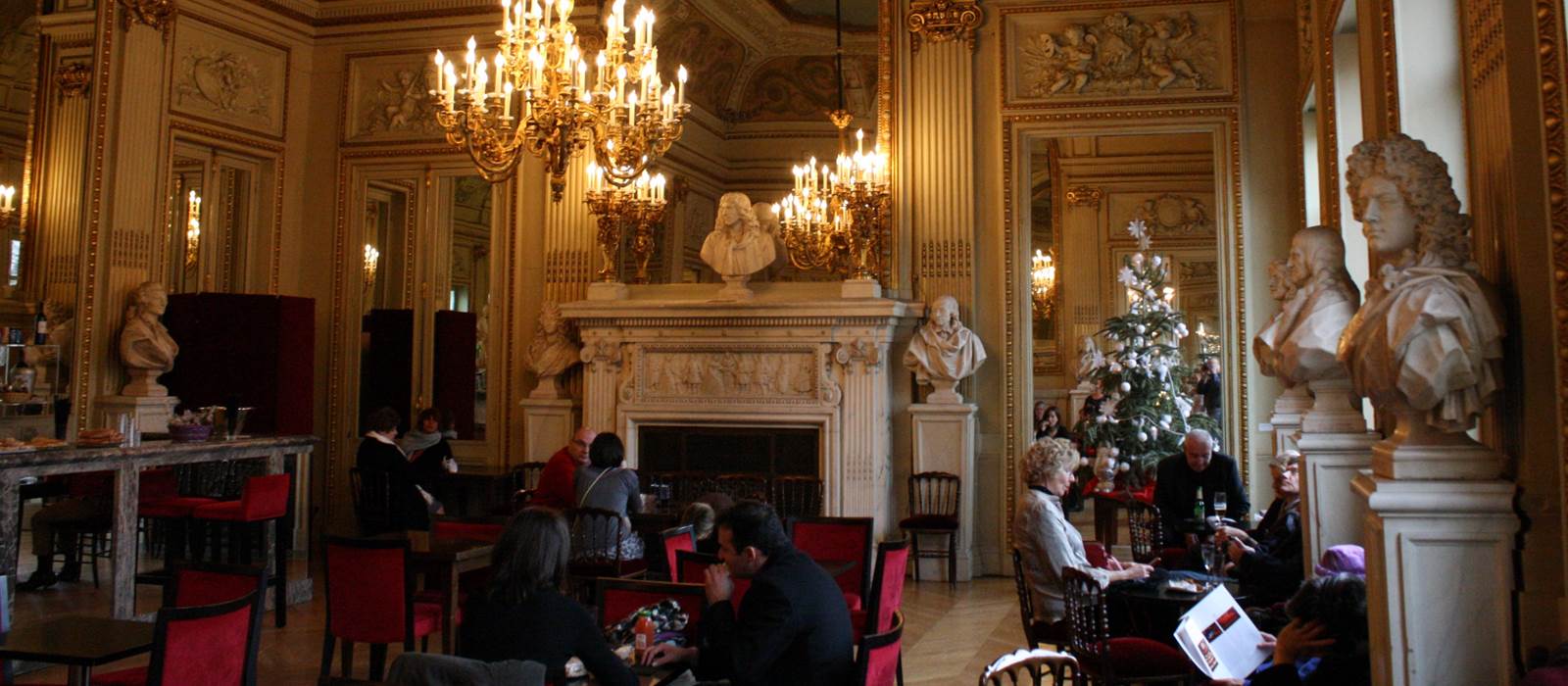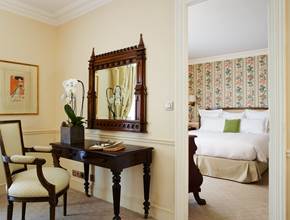
One of the Oldest Theatre Companies in the World
Step Back in Time to an Age of Classic Drama and Music
In the 1starrondissement, on 2 rue de Richelieu on the Place André-Malraux, stands the Salle Richelieu theatre where the Comédie-Française troupe is based. Located in the very heart of Paris, this is one of the few state theatres in France and the only one to have its own troupe of actors. Previously known as La Maison de Molière, the theatre boasts a proud history associated with the successful 17th century playwright and, even though its name has formally changed, many Parisians still affectionately refer it to as the ‘House of Molière’.
One of the Oldest Homes of Theatre in France
Founded by King Louis XIV in 1680, this troupe of actors was first united to bring together the two rival acting troupes of the city. Under one new name – Players of the Comédie-Française – the troupe were given a royal grant by the famously opulent king to keep the playhouse thriving. With their royal support and the guidance of Molière, the theatre performed works by the playwright himself, amongst other popular writers of the day such as Jean Racine, Pierre Corneille, Paul Scarron and Jean Rotrou to enthusiastic audiences.
Because of the enduring link between the theatre company and this location, it is one of the oldest acting troupes in the world. Despite revolution, world wars and internal disputes, there has constantly been an acting troupe based at the Comédie-Française since 1680. With over 3,000 works in their repertoire, the troupe now operates out of three theatres across Paris; the Salle Richelieu, théâtre du Vieux-Colombier and Studio-Théâtre.
The current building has stood and been the home of Comédie-Française since 1799 – before that it moved around from theatre to theatre in Paris until it found its permanent home. Like the repertoire of plays and array of actors in its company, the theatre building has constantly changed and been added to over the years. In the 1800s, due to its popularity and larger audiences, the theatre was extended but sadly had to be rebuilt in 1900 due to a terrible fire which destroyed much of the original structure.
Exceptionally Opulent and Grand Architecture
The exterior of the theatre is built in an Italianate auditorium style, fashionable at the time. Being constructed so close to the Palais-Royal was a real challenge for the architect, Victor Louis, who had to be careful not to design anything that would disturb or conflict with the existing palace. With classical columns, hundreds of sash windows and cream-coloured stonework, Louis did a wonderful job of blending the theatre into the existing architecture around it.
Once inside the theatre visitors are met with everything you’d hope for from a classic French institution – sparkling chandeliers, golden staircases, and plush red velvet seating. Once there were over 2000 seats but after the theatre was burned down and new safety measures were addressed, the existing number became a more modest 862 seats. The deep horseshoe shape of the auditorium allows for an intimate, personal experience, where audience members can see one another clearly. This means audiences feed off the energy of the room and action being played out before them more closely than more expansive, open theatres. The bond between actor and spectator becomes all the more acute because of this design and the theatre’s acoustics are brilliant, assisting with the feeling of intimacy.
A Cultural Experience Unlike Any Other
Treading the boards as a member of Comédie-Française has become a rite of passage for actors and dramatists in France over the last 300 years. Like the Royal Shakespeare Company in Britain, any actor wishing to advance their career will aspire to work on plays with the Comédie-Française. Some actors remain with the troupe for life, becoming know as ‘sociétaires’ and earning a pension after 20 years of service, whilst others use it as a stepping-stone to move on to television or film.
With a long season that runs solidly from September to July, there’s bound to be a show to entice any visitor to Paris. For French-speakers, catch a classic piece of theatre like Tartuffe by Molière, or alternatively watch a ballet, such as Romeo and Juliet. Next time you visit Paris, make sure you look up what is on at the theatre on their website first to secure tickets for a truly unforgettable night of French history, romance and thrilling entertainment.



